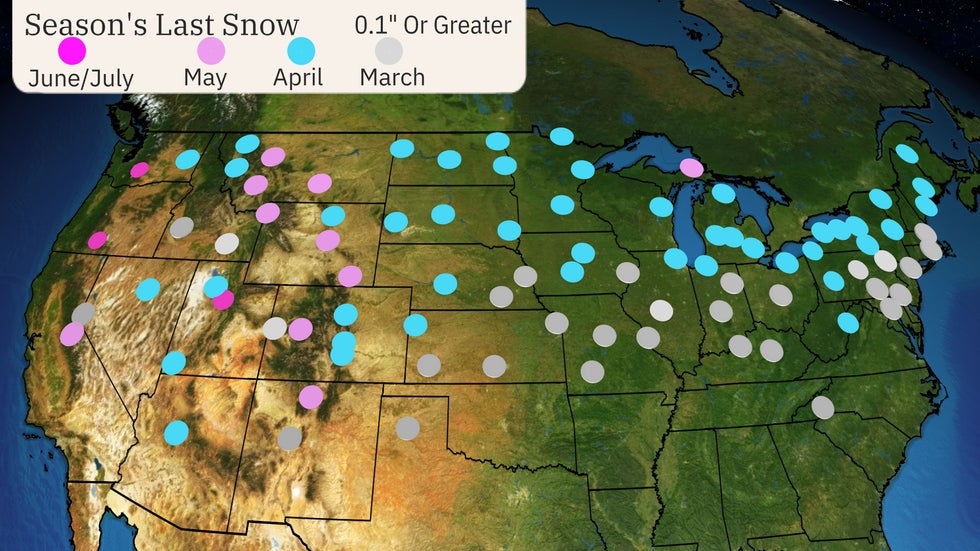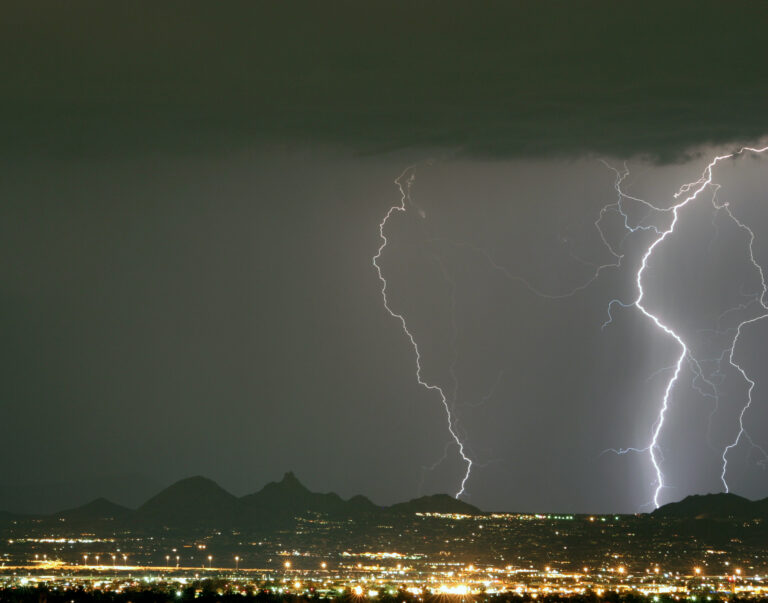Snow has been in short supply for many areas this season, but it may be too early to put away the snow gear.
March or April is when the last snowfall of the season occurs for many: The map below shows that for much of the Northeast, Midwest and Plains, the last measurable snow (at least 0.1 inches) is in March or April. Some of the higher elevations in the West, however, wait until May, or even June or July.
Alaska isn’t shown on the map, but dates for the average last snowfall range from March 31 in Juneau to June 24 in Utqiaġvik (formerly known as Barrow).
Northeast: Once the spring equinox happens, snow is not typical in areas close to the Northeast coast. Areas farther north and inland can expect the last snowfall to take place in April.
However, snow has fallen into May in parts of the region, including in Burlington, Vermont, which experienced its latest snowfall on record on Mother’s Day in 1996.
Midwest: Areas across the Northern Plains into the upper Midwest and northern Great Lakes typically experience the season’s final snowfall in April, but areas farther south usually say goodbye to additional snow in March.
The latest snowfall on record for most of the region is in May, even for areas as far south as Amarillo, Texas, where the latest snow on record fell May 4, 1935.
West: The last snowfall of the season occurs a bit later in the West, with many locations waiting until May or later. April is even the snowiest month of the year for some spots, including Breckenridge, Colorado, where the average April snowfall is 28 inches.
The latest snowfall for many locations in the western U.S. is in June, but a few have experienced the last snow of the season as late as July, including Crater Lake National Park, Oregon, and Yellowstone Lake, Montana.
Snow has been in short supply this season: This winter was the warmest on record in the contiguous U.S. and that limited snowfall in many areas east of the Rockies. Meanwhile, some of the higher elevations of the West have seen more snow than average.
Spring storms can bring heavy snowfall into April, so some locations may make progress on snowfall deficits.
Seasonal snow compared to the 14-year average as of Feb. 29. Brown shadings represent below average snowfall and green and blue shadings show above average snowfall.
A few notes about the data in this article: We only used cities and locations where the average last measurable snow of the season occurs in March or later. As a result, Washington, D.C., was among the cities not shown; its average date of the season’s final snow is Feb. 27.
Since accumulating graupel or hail is also officially classified as snow in daily and monthly climate reports, we made every effort to quality check each “latest snow” record, removing those dates when temperatures were clearly too warm for snow, and hail likely fell instead.
Source: https://www.wunderground.com/article/storms/winter/news/2024-03-19-spring-snow-last-snow-of-season


